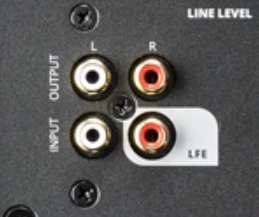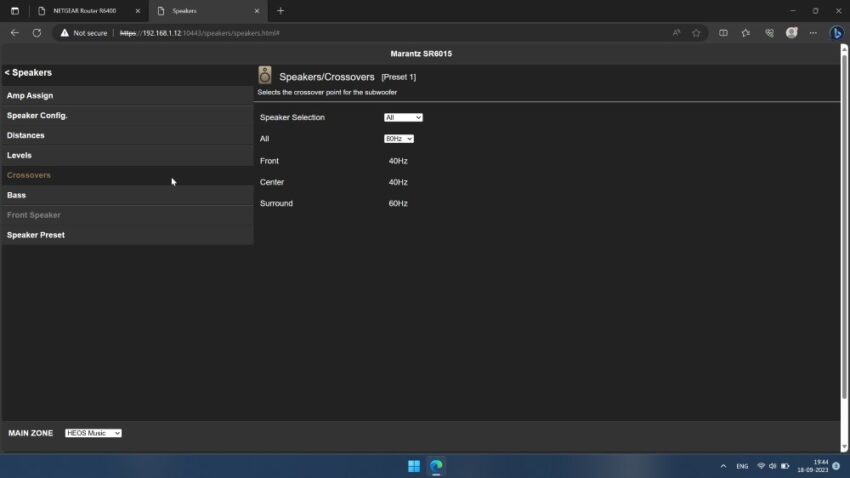What is Bass Management?
One frequently asked question by new enthusiasts is about bass management. What is it? I have been in the audio world for a long time, but when I got back into home theater seriously about a decade ago, I had to ask as well! My old Kenwood AV receiver didn’t have anything except a loudness knob. However, my new Denon AV receiver had all these confusing (at the time) options for bass. Well, if you are one of those who is confused by bass management, keep reading!
Why Do I Care About Bass Management?
Good question. Bass management and room correction are often used interchangeably, but they are two different processes. Typically, you can have bass management without room correction. However, bass management is typically part of the automated setup process of an AV receiver. It is integrated into the room correction process. I know, I was confused at first, but it all makes sense, I promise!

In its simplest form, bass management is responsible for directing low-frequency signals from the source material to the speakers most capable of reproducing those low frequencies. This means that low-frequency signals won’t be fed into tweeters and vice versa.
Think of it this way: Bass notes are the lowest notes that we can hear. Those are best created by very large drivers. A smaller driver (like a tweeter) can create a bass note, but it will have a hard time doing it accurately (it won’t sound correct) and can’t do it very loudly (sort of the point of bass). You want your system to send the bass notes to the larger drivers in your speakers, or the speakers in your system (namely the subwoofers) that can best create accurate and loud bass waves. This is the essence of bass management.
So How Does Bass Management Work?
This is achieved in two different ways depending on the source material. With multi-channel audio tracks, there is often a dedicated Low-Frequency Effects (LFE) channel. This is commonly known as the .1 in a 5.1 system (for example). Sound engineers will steer the sounds to the appropriate speakers. This steering means dialogue goes to the center, left and right info to those speakers, ambient sounds to the surround channels, and low bass to the subwoofers. This is not bass management. The audio is encoded so that specific sounds are played by specific speakers. But what if your speakers aren’t good enough (or capable enough) to play specific sounds? How do you take the sounds out of those speakers and move them to different speakers? Enter bass management!

Diving Into the Menus
Within the menus of the AV receiver is a screen that allows you to set the crossover for each speaker (or pairs of speakers). As we’ve explained, a crossover is a setting that tells your AV receiver to take bass out of your speakers and redirect it to your subwoofers. During the room correction process, the crossovers for your speakers will be set automatically. After you finish running your room correction program, you can set or change the crossover values manually if you wish. This is generally the preferred way to “bass manage” your speakers.

The “Old” Way
The second, and increasingly obsolete way to achieve bass management is through a manual low-pass filter. When you connect a subwoofer to your speakers via the speaker-level inputs/outputs, you can use the subwoofer’s built-in crossover to steer the bass to the subwoofer and send the rest of the sounds to your speakers. Before active crossovers existed within AV receivers, this was THE way we did bass management! Now, with multiple subwoofers and oodles of speakers, it is more likely that you’ll use the crossover in your AV receiver as it is far more convenient.
The Limitations Of Bass Management
No matter what method you use, there are some things you need to know about bass management. First, bass management, and the crossover settings, are not hard limits. Just because you set the crossovers to 80Hz, doesn’t mean that your subwoofer or speakers will not play sounds above or below those crossovers. It’s not a cliff where sounds fall off sharply. It’s meant to better blend your main speakers with your subwoofer without any obvious nulls or dips.

Secondly, bass management is not a magic bullet. If you have improper placement or crappy subs or speakers, no amount of bass management will help you. By ensuring proper placement of your gear, and adding room treatment to address issues with your room, you are giving the bass management the best chance at being effective.
Our Take
Bass management is not difficult to understand. The TL:DR is that it ensures that the low-frequency sounds in your media go to the appropriate speakers. This means (when done properly) that your speakers are not being pushed past their limits, and the proper speakers are getting the right frequencies. It will also make for a more blended and unified sound experience without nasty nulls or humps!
However, we are living in a time where a lot of this process is automated and pretty darn good. Sure, we need to review the settings and tweak a couple, but most times, the software gets it right!


